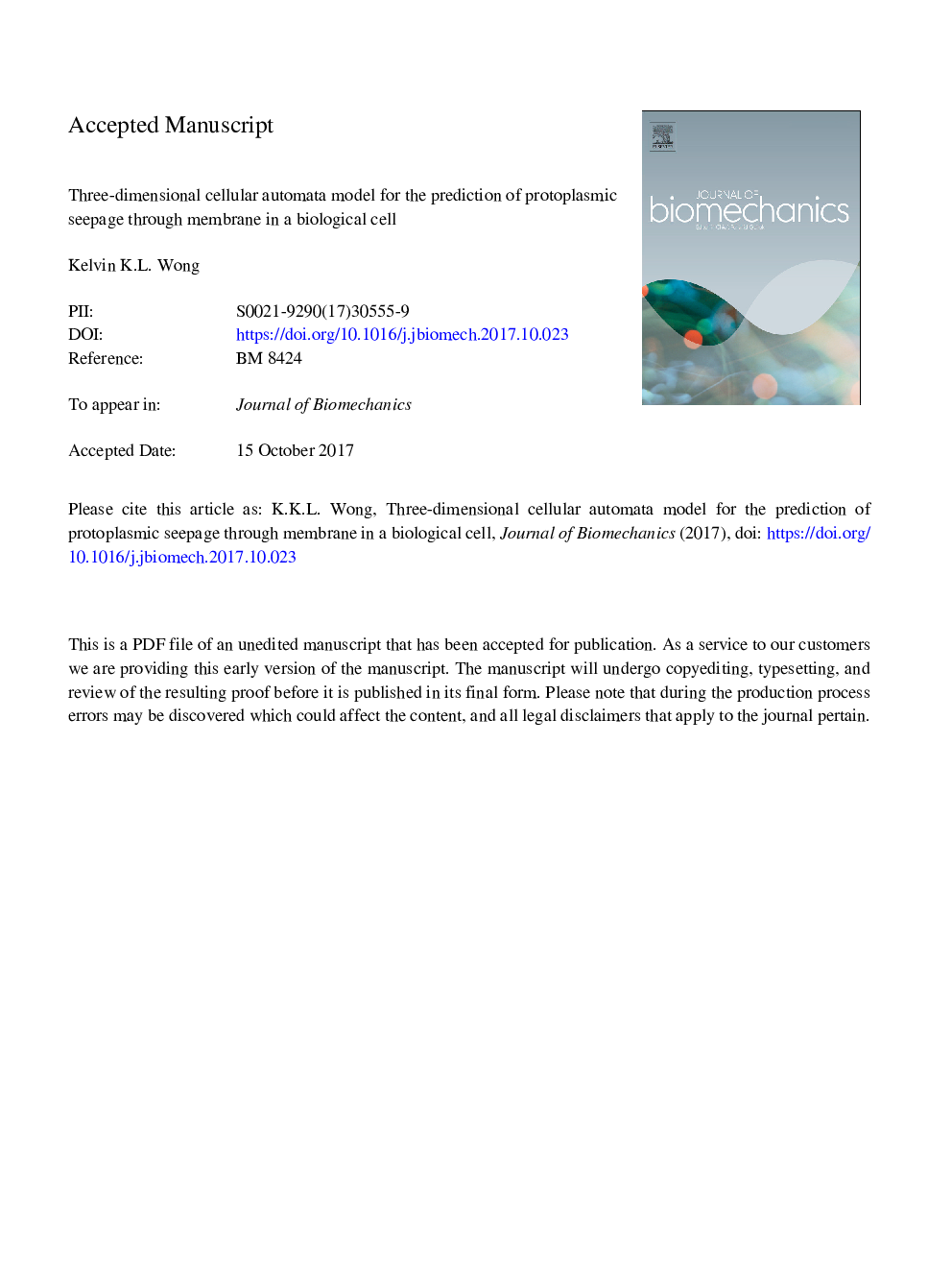| Article ID | Journal | Published Year | Pages | File Type |
|---|---|---|---|---|
| 7237017 | Journal of Biomechanics | 2017 | 37 Pages |
Abstract
This paper presents a three-dimensional and compressible biological cell model based on discrete element method using multiple interacting agent that represent cellular structures within a simulated environment. The cytoplasm and nucleoplasm fluid behavior in the cell is time dependent. When taking this approach, it is important to calibrate protoplasmic flow behaviors through simulation techniques such as compressing the cell and examining the agents representing the cell cytoplasm seeping between the ones representing the confining cell membrane. This type of modelling may motivate future work on simulating simultaneous operations and interactions of multiple cellular agents in an attempt to re-create and predict the appearance of complex phenomena such as protoplasmic seepage that is caused by the force actuations of neighboring cells. Seepage occurs when a cytoplasm agent passes between three membrane particles connected in a triangular network. Based on the force-deformation response of spheres having variable size and stiffness, semi-analytic expressions are developed for the force required to cause seepage and solved numerically to find the maximum resistance offered by the membrane against cytoplasm seepage. The equations are based on force equilibrium and the constitutive relations for particle contact and membrane stiffness. In multi-particle representations of an individual cell undergoing deformation, different modes of cytoplasm seepage through confining cell membranes can occur. This can be avoided if simple criteria are satisfied. These findings can lead to certain fundamental laws for the improvement of novel cell-to-organ simulation techniques based on discrete element method.
Related Topics
Physical Sciences and Engineering
Engineering
Biomedical Engineering
Authors
Kelvin K.L. Wong,
